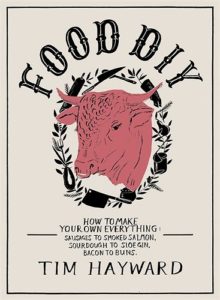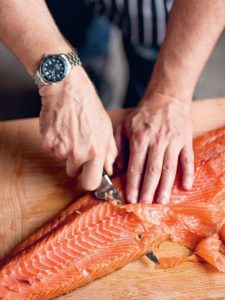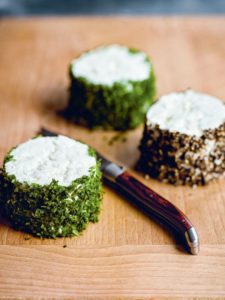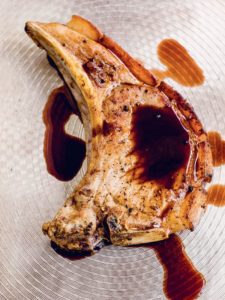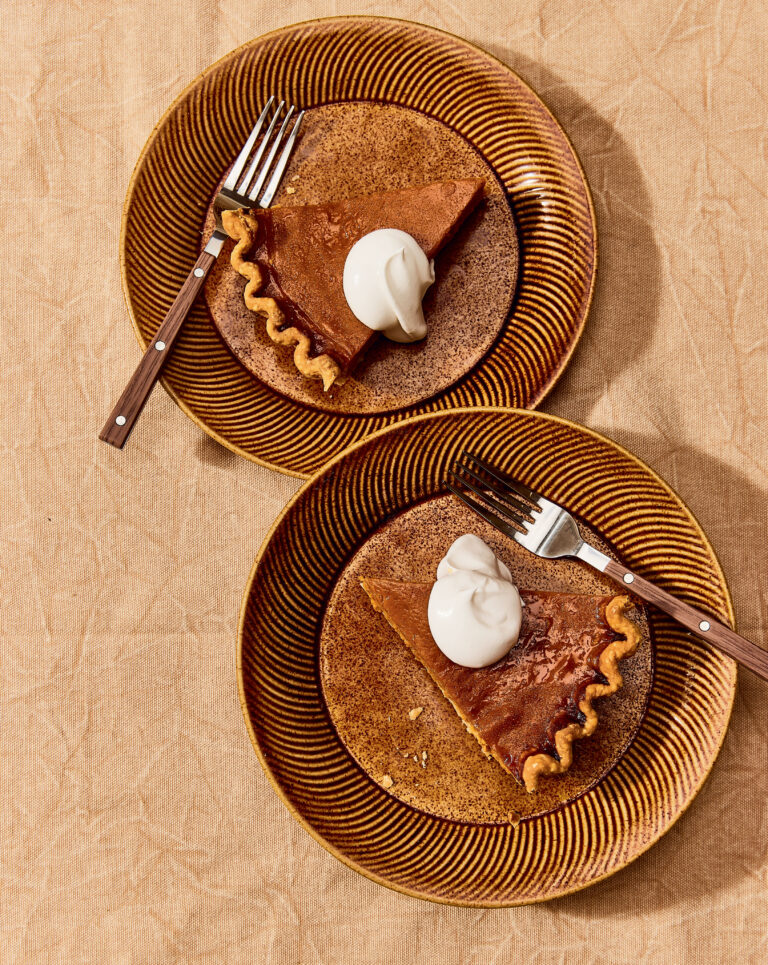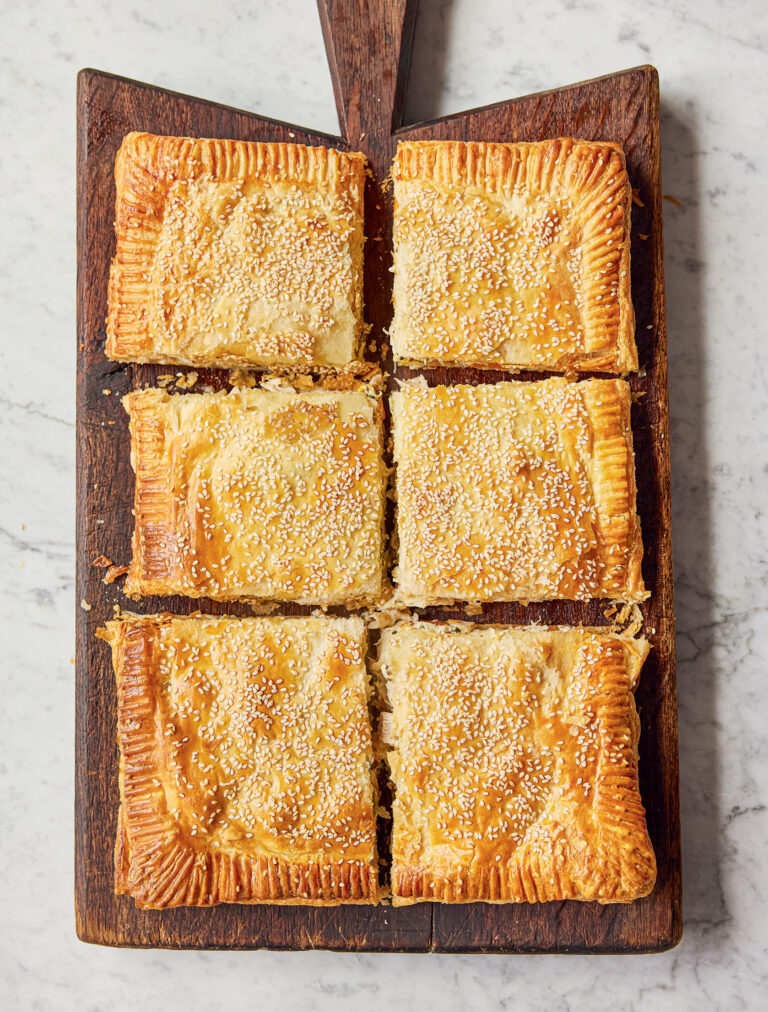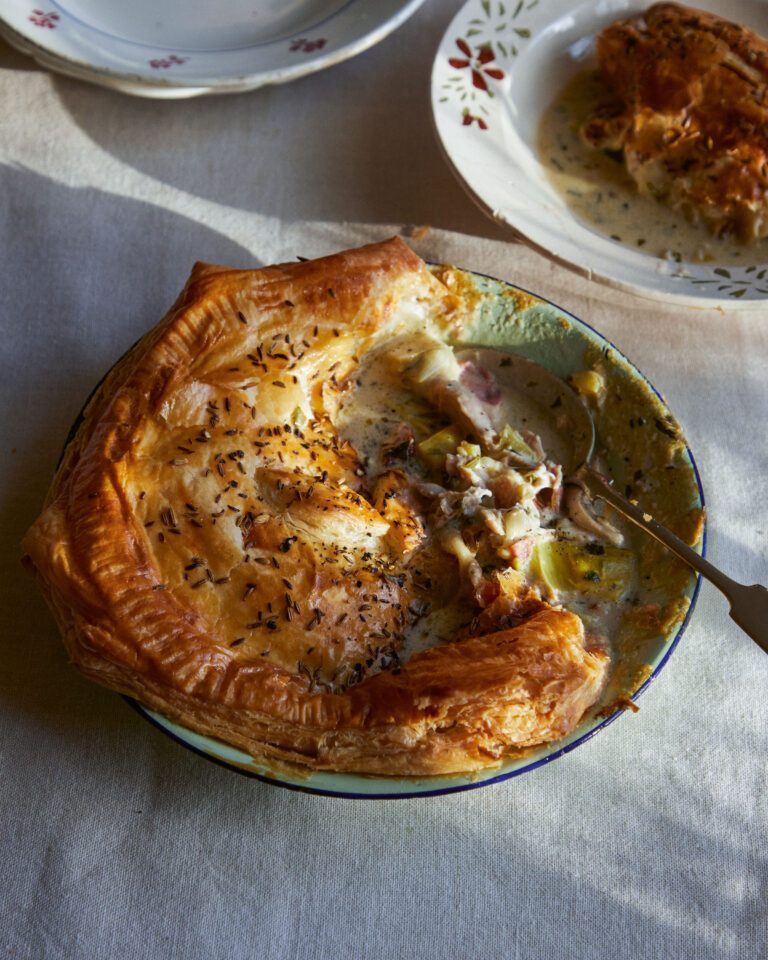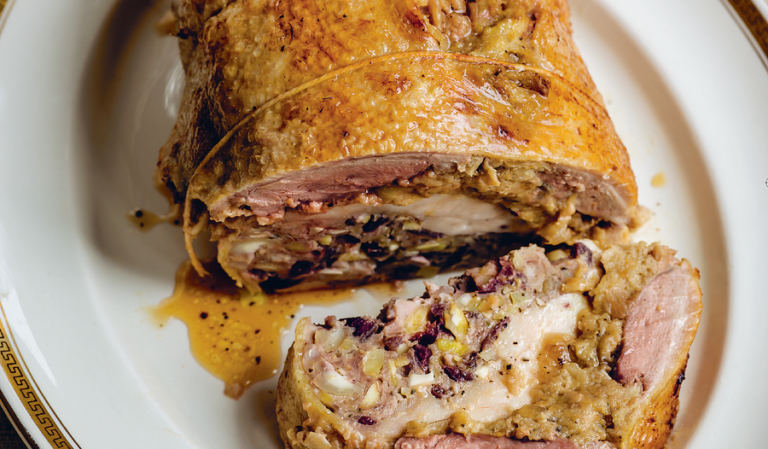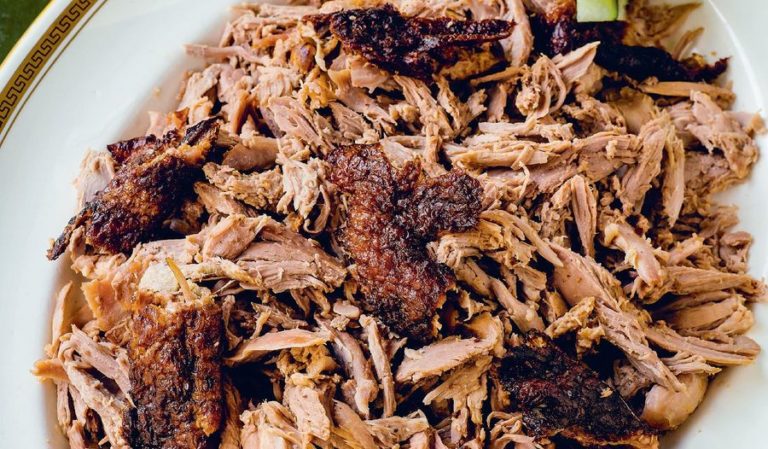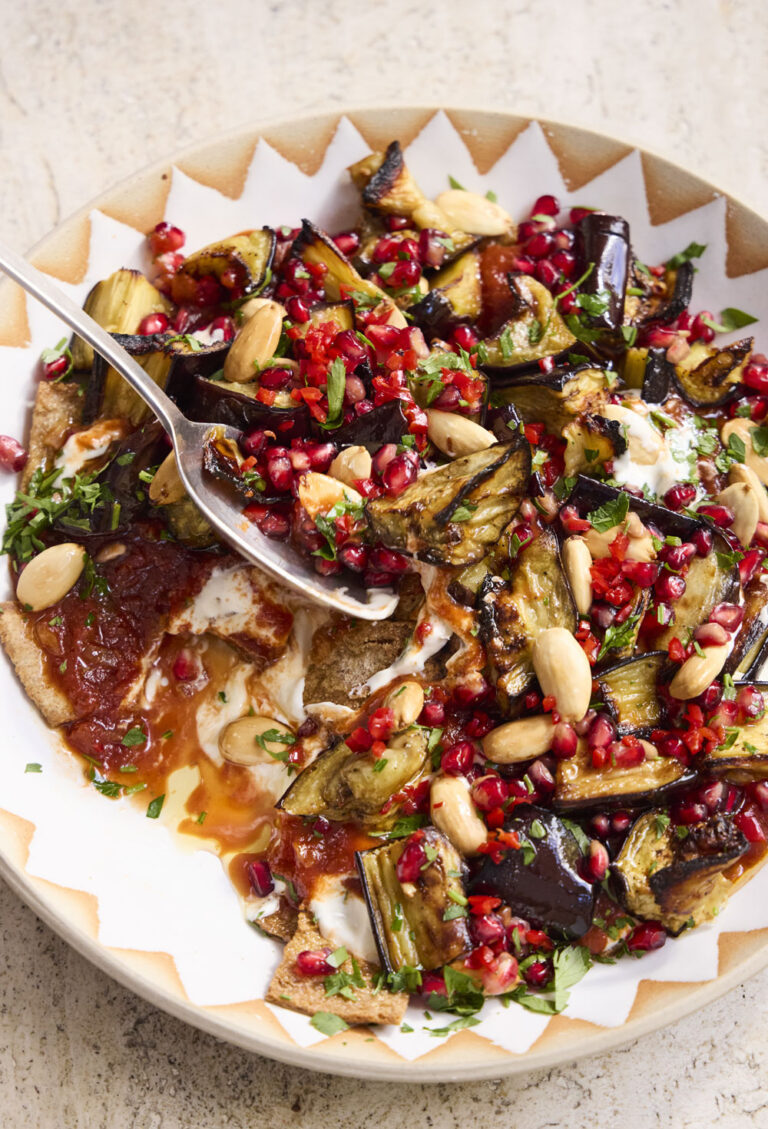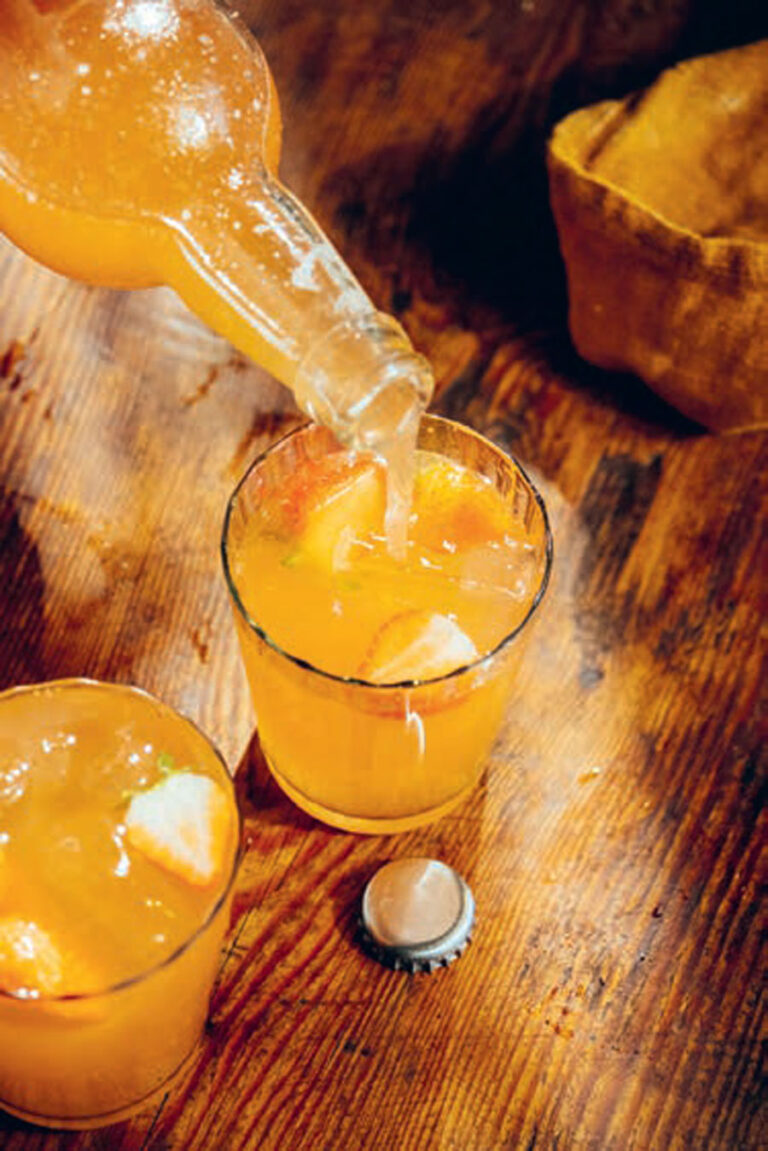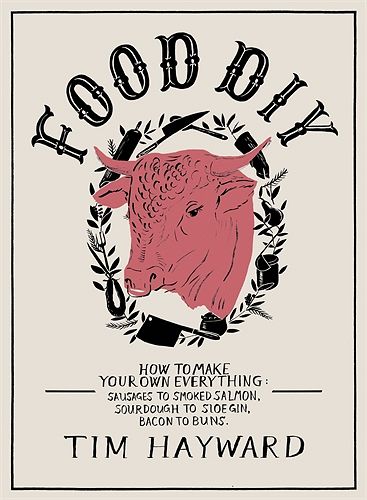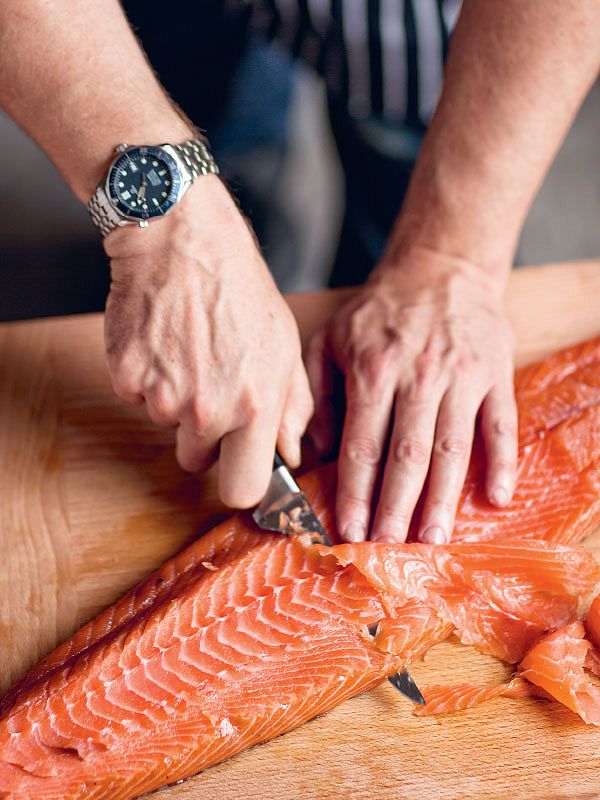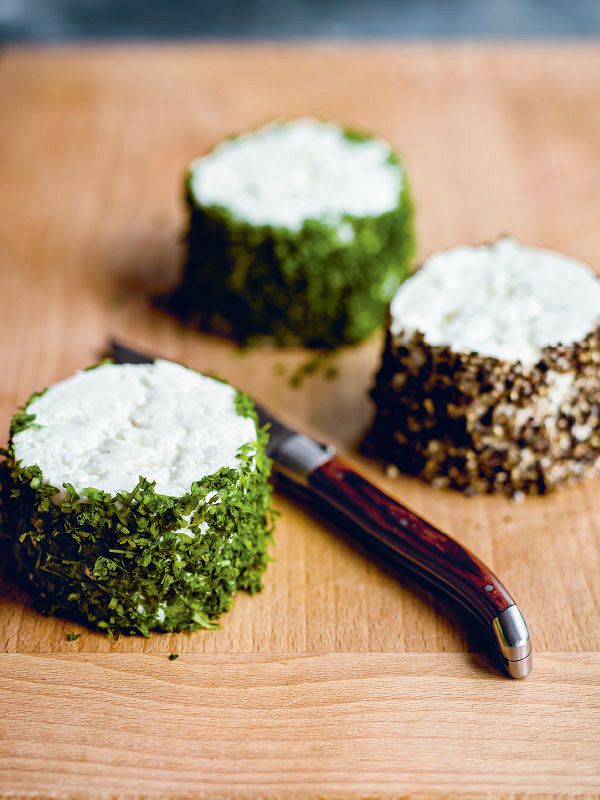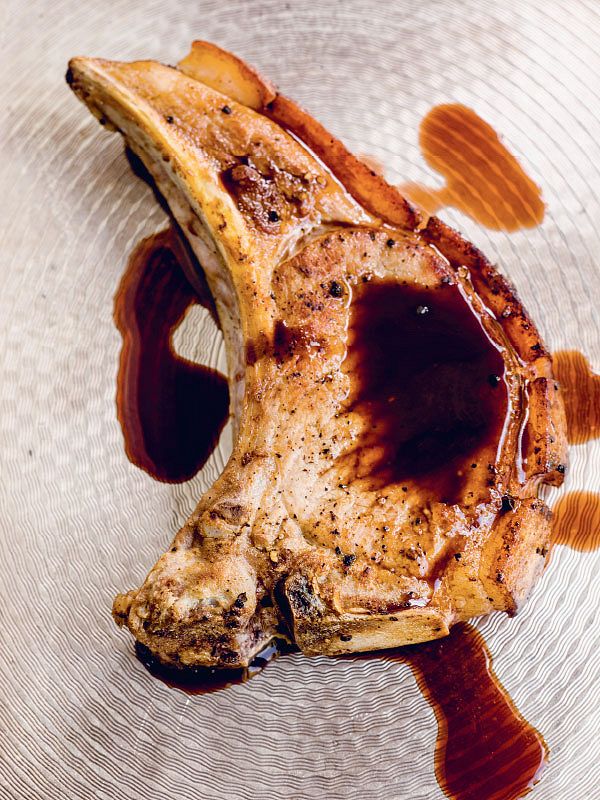Gala Pie
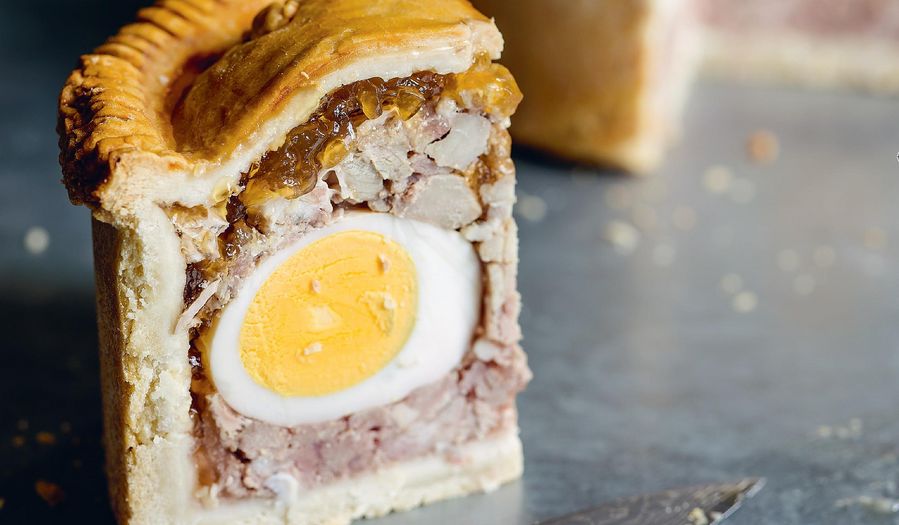
Tim Hayward presents his recipe for impressive Gala Pie from his cookbook Food DIY. This striking pie made with hot water crust pastry is perfect for celebration days.
Introduction
I must have first encountered gala pie at a family wedding, funeral or other licensed brawl.
It was a symbol of celebration, an impossibly sophisticated refinement on the quotidian pub
pork pie. While uncles fought and boasted and aunts consoled themselves with Babycham,
gin and recrimination, I sat under a table on beer-soaked carpet and wondered at the infinite
egg. How was it possible that every slice of the yard-long, loaf-shaped pie had a pristine slice
of egg in it? Was it even a hen that laid it? Perhaps it was laid by a gala . . . whatever that was.
(I think I probably worried too much as a child.)
In my less troubled maturity, I discovered that the infinite egg is a simple trick. A quantity of
eggs are separated and the yolks loosely beaten together before being poured into a narrow
gauge of sausage skin. After a few minutes in hot water the yolk ‘sausage’ can be peeled
and then carefully inserted into a larger skin along with the combined whites, for a further
poaching. Of course the creation of the authentic unappetizing grey ring around the yolk is,
and must ever remain, a trade secret.
These days I love a good pie and, though the process has many steps, they are all simple
and almost always guarantee a good result. The gala pie is one of those projects that can happily take up an afternoon, but the effect on the audience of wheeling it out is worth all
the effort. Rather than indulging in the admittedly hilarious shenanigans of poaching eggs in
sausage skins, this recipe contains a simple trick for presentation using whole eggs. It’s also
worth noting that some consider a gala pie should also contain chicken. You can, if you wish,
introduce a layer of poached or leftover roast chicken above or below the eggs. I personally
consider this to be a ridiculous affectation; possibly even French.
Ingredients
| For hot water crust pastry: | |
| 475g | strong white bread flour |
| 5g | salt |
| 125g | water |
| 175g | commercial lard or carefully hoarded beef fat |
| For the pie: | |
| 1kg | boned pork shoulder, skin on |
| 200g | commercial unsmoked bacon |
| 2.5g | mace |
| 2.5g | nutmeg |
| 2.5g | allspice |
| 2.5g | black peppercorns |
| 2.5g | fresh sage leaves |
| 10g | salt |
| 4 | eggs, plus 1 for eggwash |
| For the jelly: | |
| 1 | split pig’s trotter |
| 1 | stick of celery |
| 1 | carrot |
| 2 | bay leaves |
| 2-3 | fresh sage leaves |
Essential kit
You will need muslin and a round, 16cm across, 7cm deep pie tin with a loose bottom
Method
To make the pastry:
Mix the flour in a bowl with the salt. Bring the water to the boil in a pan and melt the lard
or dripping in it, then pour the hot liquid into the bowl of flour and begin combining it with a
palette knife.
As soon as the dough is cool enough to handle, work it together with your fingers, then
form it into a ball. Leave to cool and rest for a few minutes before using. The dough needs
to be warm enough to be workable, but if you don’t rest it a little it remains elastic and will
contract when baked. This amount will make about 750g of pastry.
To make the pie:
Trim the skin and tough connective tissue from the boned pork shoulder and save it. These
will be vital elements of the jelly later on. Cut the meat into rough 1cm dice.
Cut the bacon into similar-sized pieces. In commercially produced pies, nitrites are added
to keep the filling an appetizing colour. There are enough residual preservatives in shopbought
bacon to keep the pie filling pink throughout. If this thought worries you, you can
leave out the bacon for an authentically rustic, grey pie interior.
To make the jelly, chuck your porky trimmings into a pot with the split pig’s trotter, celery,
carrot, some bay leaves and sage. Cover with cold water and allow to barely simmer for 2–3
hours, until the trotter gives up the ghost and collapses. Strain the liquid through muslin and
keep it in the fridge. Check that it sets to a good consistency – if it doesn’t, you can reduce it
a little further. This will produce much more jelly than you need but it freezes well, and I like
to serve it chopped as a side dish with the pie.
Grind the whole spices, then mix them with the chopped sage leaves and a good 10g of
salt and season your meat. Remember that the pie is a preserved product, so this is as much
about curing as flavouring.
Mix the meat and seasonings thoroughly by hand and then blitz half the mix in a food
processor before recombining. I like chunks of pork in my pies, but you can vary proportions
here to suit your own taste.
Place 4 eggs in a pan of cold water, bring to the boil, simmer for exactly 4 minutes, then
plunge them into iced water.
Preheat the oven to 180°C. Cut off a quarter of your dough to use for the lid. Roll out the
remaining dough, fold, turn and reroll until it begins to feel smooth and elastic. Roll to a large
circle to line your pie tin. Mould the pastry to fit the tin and allow an overhang of at least 2cm.
You can grease it if you think there’s not enough fat in this recipe already, but it’s not remotely
necessary. My tin is round, 16cm across, 7cm deep, with a loose bottom. You shouldn’t need a
springform, as the pie shrinks away from the sides as it cooks and pops out clean.
Put a thin layer of meat into the bottom of the pie case, followed by your peeled eggs. Now
here’s the cunning bit – make a pen mark on the side of the dish on the centre line of one of
your eggs.
Carefully pack more filling around and over your eggs, trying to avoid any air gaps.
Form a lid with the remaining pastry and glue it on with eggwash, then trim the excess
and crimp the edges. Make a small hole in the centre of the pie and, using the back of your
knife, mark cutting guides along the centre line of each egg. Finally, eggwash the top, place
the pie on a baking tray and put into the preheated oven. After 90 minutes, carefully remove
the pie from the tin, eggwash again and return to the oven for 5–10 more minutes.
Once the pie is thoroughly cool, wrap the base and sides carefully in a ‘bandage’ of
clingfilm. This will prevent the jelly leaking through any cracks in the pastry before it is fully
set. Warm some of the jelly in a pan and pour it slowly through a funnel to fill the air gap
between filling and case. Take your time, and keep tapping the pie gently on the worktop to
expel any air bubbles. Put back into the fridge so the jelly can set.
Slice neatly through the guide lines in the crust and serve.
Reviews
Have you tried this recipe? Let us know how it went by leaving a comment below.
Thank you for your rating. Our team will get back to any queries as soon as possible.
Please note: Moderation is enabled and may delay your comment being posted. There is no need to resubmit your comment. By posting a comment you are agreeing to the website Terms of Use.
